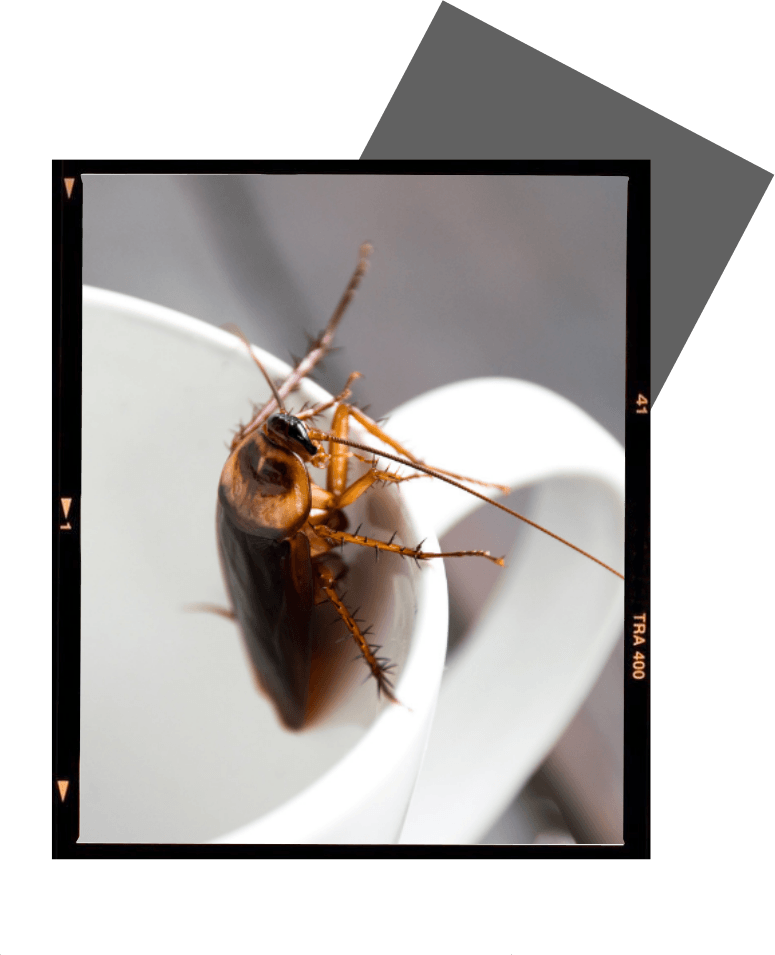Roach Exterminator
There are more than 3,500 species of cockroaches found worldwide, 55 of which we have in the United States. In South Carolina, the ones causing the greatest public health risk are the German, Smoky Brown, American, Oriental, and Brown-Banded Cockroach. Many of those (especially the bigger ones) are often lumped together into one larger group called Palmetto Bugs.
Cockroaches give us the creepy crawlies for a reason. In his book, Dynamics of Health and Disease, Dr. Carter L. Marshall wondered whether people "live in poor housing because they're sick, or whether they're sick because they live in poor housing." Cockroaches themselves are considered natural allergens by the CDC, and even the most lavish properties can become riddled with an infestation. The bugs' saliva and pieces of their legs and wings can get into the airstream to trigger asthma attacks, especially in children. They're also filthy creatures, tracking dirt and disease wherever they walk. Since they spend so much time feasting on garbage, they're known to spread E. Coli, salmonella, and gastroenteritis.
These nocturnal scavengers eat nearly anything they can find, and they prefer to spend their time in warm, moist environments. That's why you'll frequently spot them wandering around your kitchen, bathroom, and bedroom, scurrying into dark corners to hide. They can run at up to 3 miles per hour, making them very hard to catch, and they can stay hidden for as long as necessary – they can live nearly a month without food or two weeks without water.
That ability to hide so well is one of the things that makes these bugs so hard to kill, but they have plenty of other impressive defense mechanisms too. The bugs are durable, with a hard outer shell. They produce their own antibiotics that keep them safe from the diseases they spread to humans. They can regrow legs, which is why they'll so often shed them, leading to respiratory problems for people living nearby. There's an age-old rumor that cockroaches could survive a nuclear attack. They've certainly survived through plenty, with scientists agreeing these bugs were walking around as far back as the Jurassic Era. That's plenty of time to evolve new defense mechanisms, but it seems cockroaches don't need millions of years to adapt, they're already developing resistance to insecticides.
The CDC says there are four main management strategies for controlling cockroaches: prevention, sanitation, trapping, and chemical control. At Bluffton Pest, we don't just get rid of the bugs inside your building at the time we visit and then call it a day; we work with you to make sure there's a sustainable, long-term solution for the bugs. That includes inspecting the property for ways the bugs may be getting inside and caulk over or repair those entryways. We'll also search for things that could be attracting them and help you to remove those roach-magnets.
Sanitation does play a role in what's bringing the cockroaches to your area, but the presence of these bugs does not necessarily mean you don't keep a tidy property. Roaches have been spotted on airplanes and even hospitals around the world. A neighboring property might have unsanitary conditions that you aren't able to control. We'll form a plan of regular attack on the roaches to make sure they're kept at bay within your own space.
If you're in Eastern South Carolina, whether you need help in your business or your home, contact us today to see why Bluffton Pest is ranked as the #1 choice for pest management in our area.

